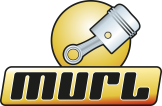This guide describes how to set up the development environment for the creation of native Mac OS X applications. It applies to the following operating systems:
- Mac OS X 10.6.x (Snow Leopard)
- Mac OS X 10.7.x (Lion)
- Mac OS X 10.8.x (Mountain Lion)
- Mac OS X 10.9.x (Mavericks)
Prerequisites
For developing Mac OS X applications, it is recommended to use the XCode IDE. It already ships with a compiler and debugger as well as all necessary frameworks and libraries to build native applications using the Murl Engine.
Download and install XCode via the Mac App Store: https://itunes.apple.com/us/app/xcode/id497799835
Installing the Murl Engine
You should first pick a location where you want to install the Murl Engine and create that folder. Note: When choosing the name of the directory you should omit any white spaces, umlauts or other special characters. This is a precaution as any 3rd-party toolchains for possible future target platforms might not be as tolerant of such names as the currently supported ones.
Download the latest Murl Engine archive and unzip it to that newly created folder. Get it from our Downloads section:
http://murlengine.com/?murlpage=download&murlfile=latest
And that's it for installing the Murl Engine for Mac OS X development. After unzipping, you should see the application "Dashboard.app" and the folders "murl" and "tutorials" inside the target folder.
Testing your Murl Engine installation
You can use one of the Murl Engine tutorials to test your installation.
Start XCode, choose "Open..."" from the "File" menu and select the following project file:
tutorials/chapter01/00_hello_world/project/osx/xcode/hello_world.xcodeproj
Choose "Run" from the "Product" menu to compile and run the first tutorial. After finishing the build, you should see an empty application window stating "Hello World powered by murl engine" in its title bar.
See Tutorial #00: Hello, World! for details about that specific tutorial.
Next Steps
Once you have successfully verified that your installation is working, you can continue browsing the other available tutorials from the Tutorials page to get step-by-step insights into the workings of the Murl Engine.
See also the Target Installation Guide for details about preparing your development environment for building other targets.
